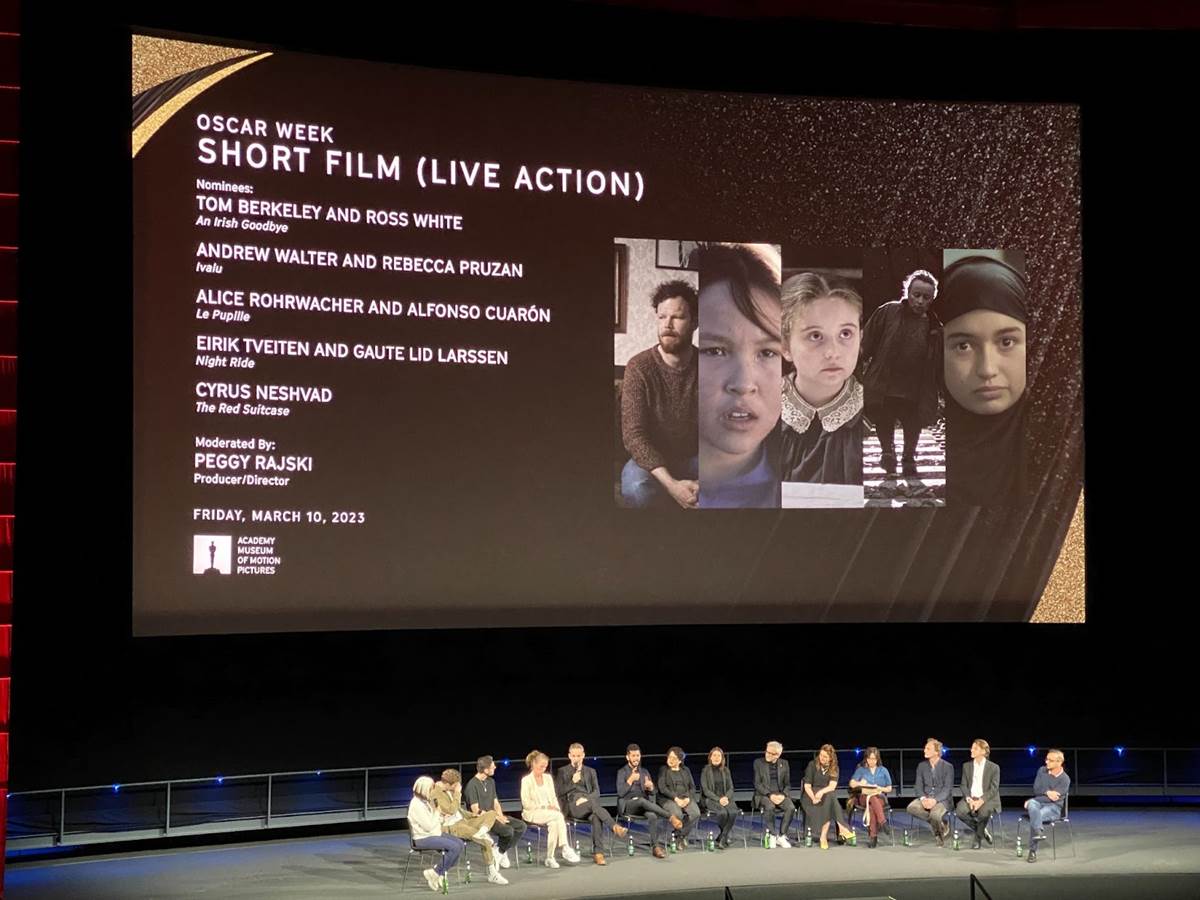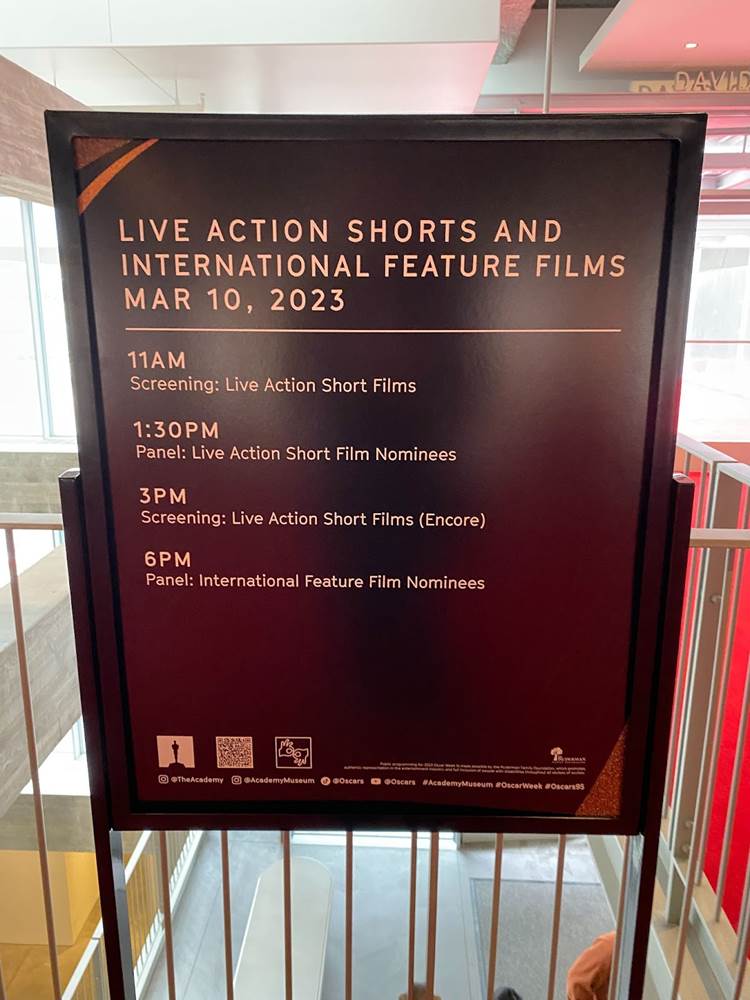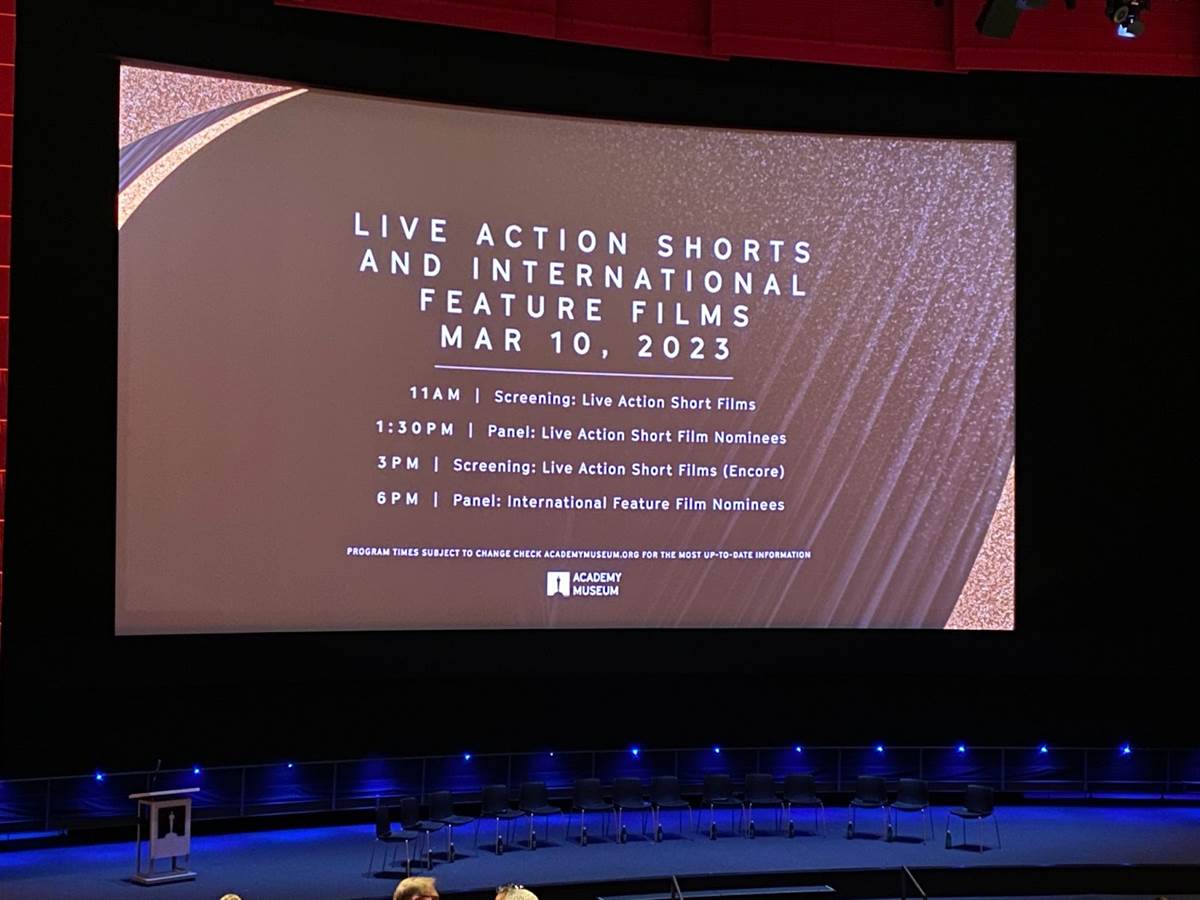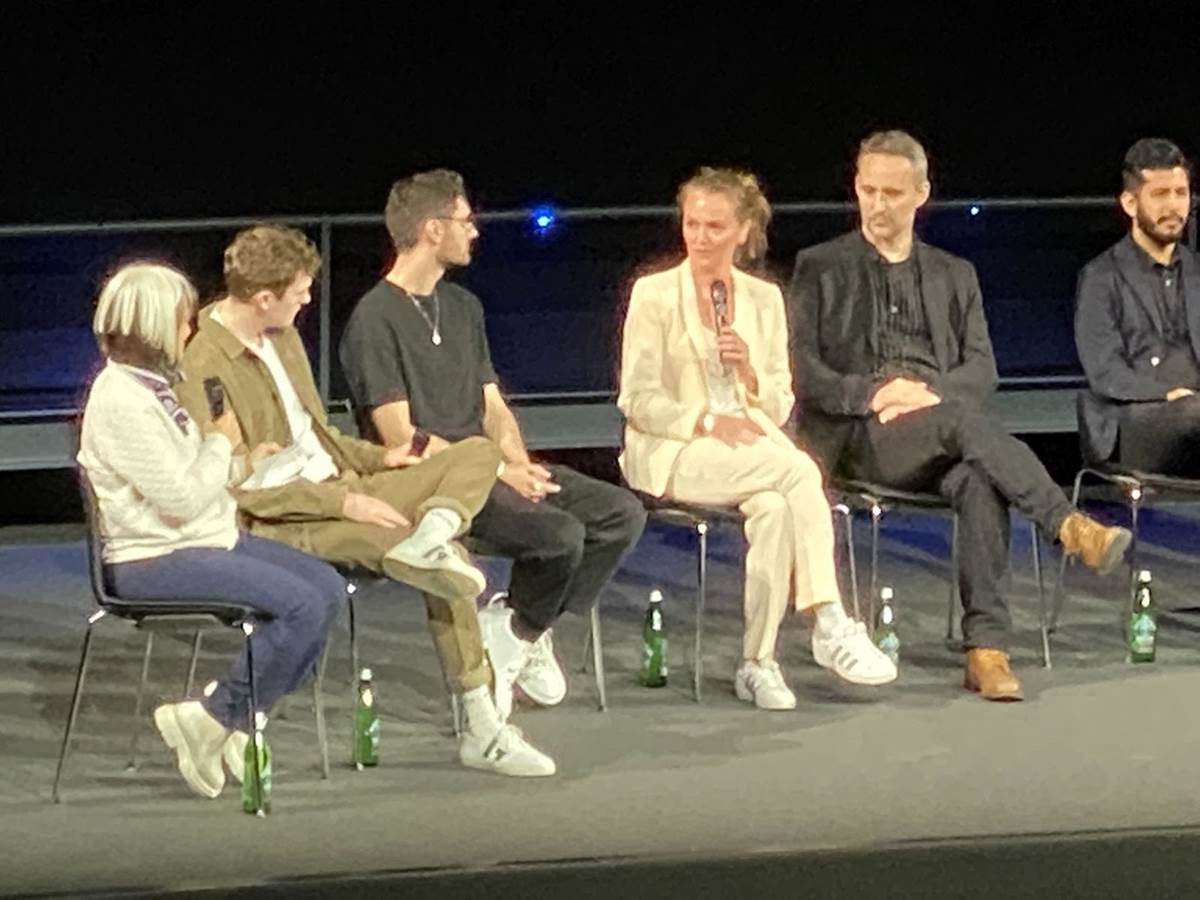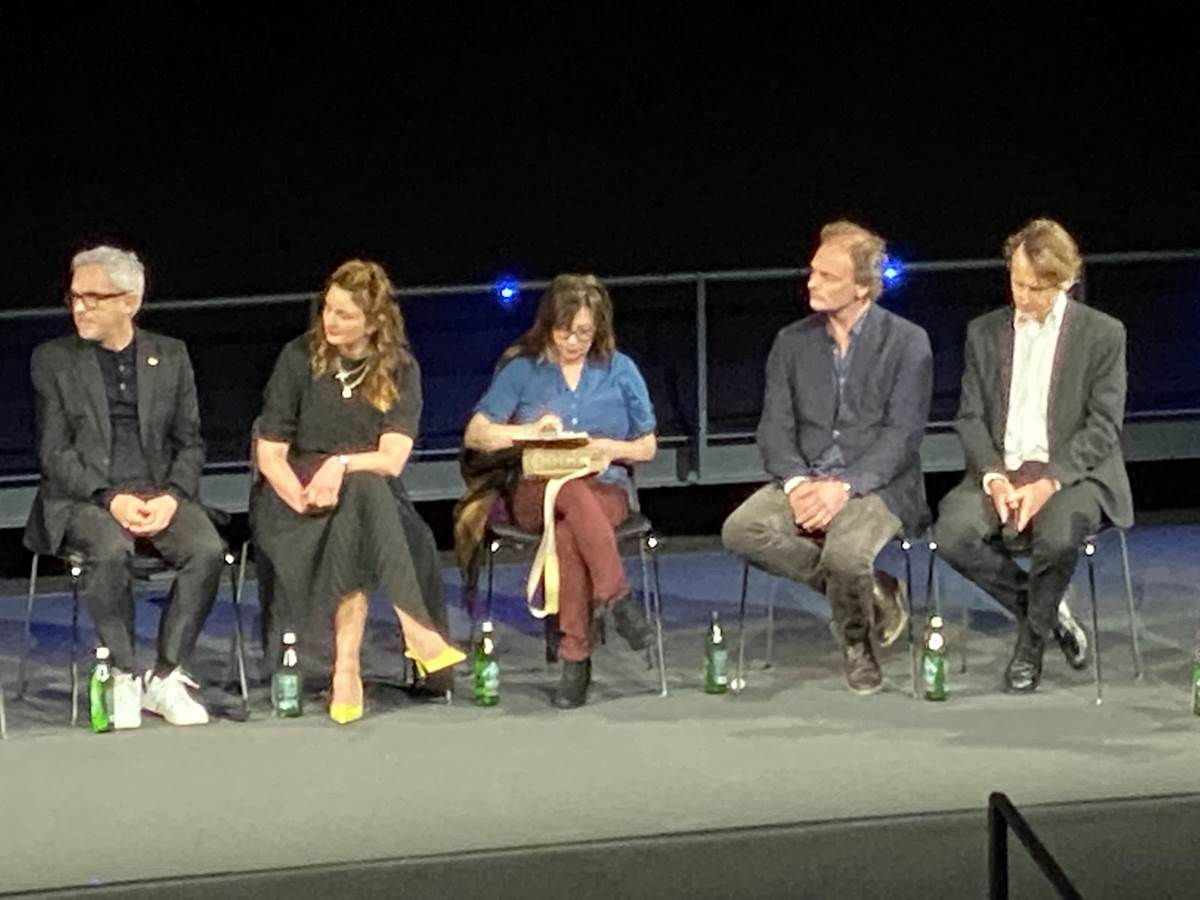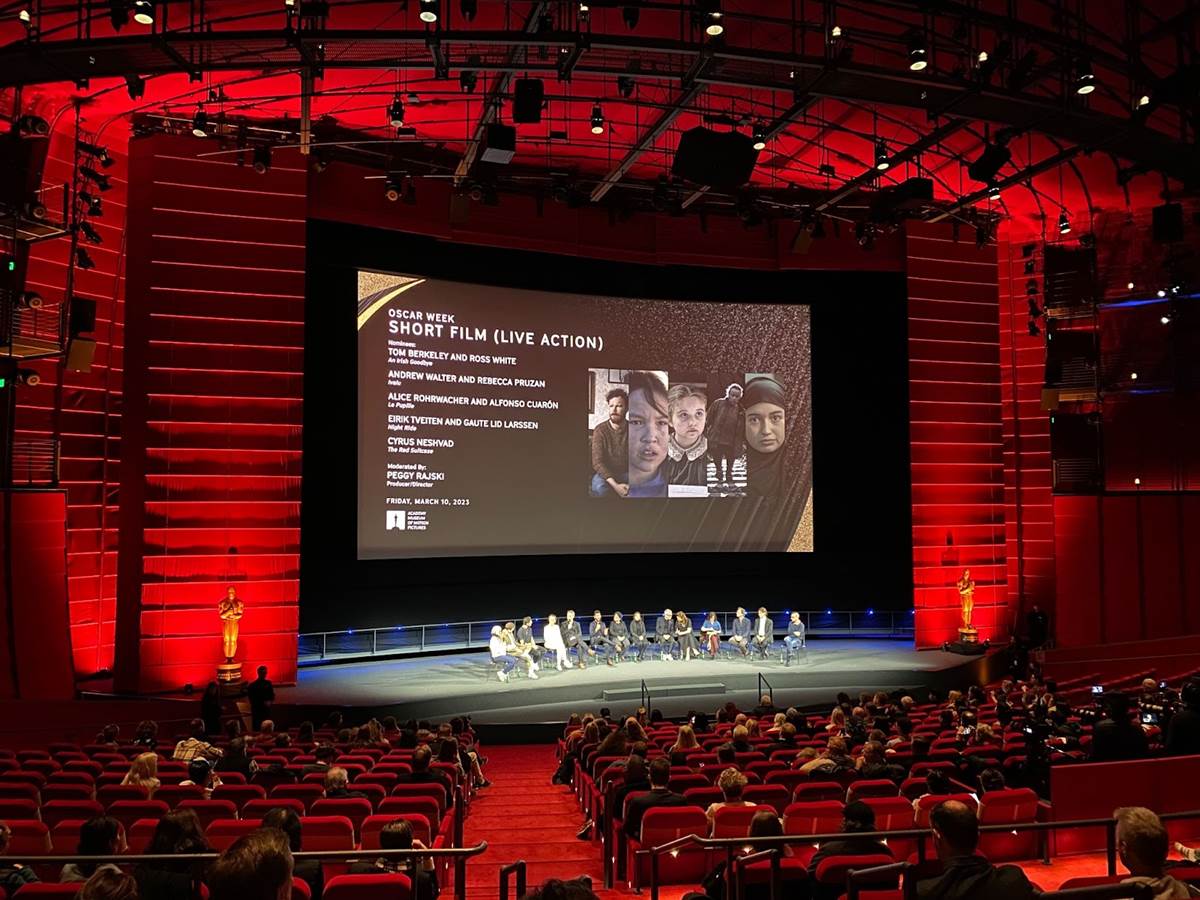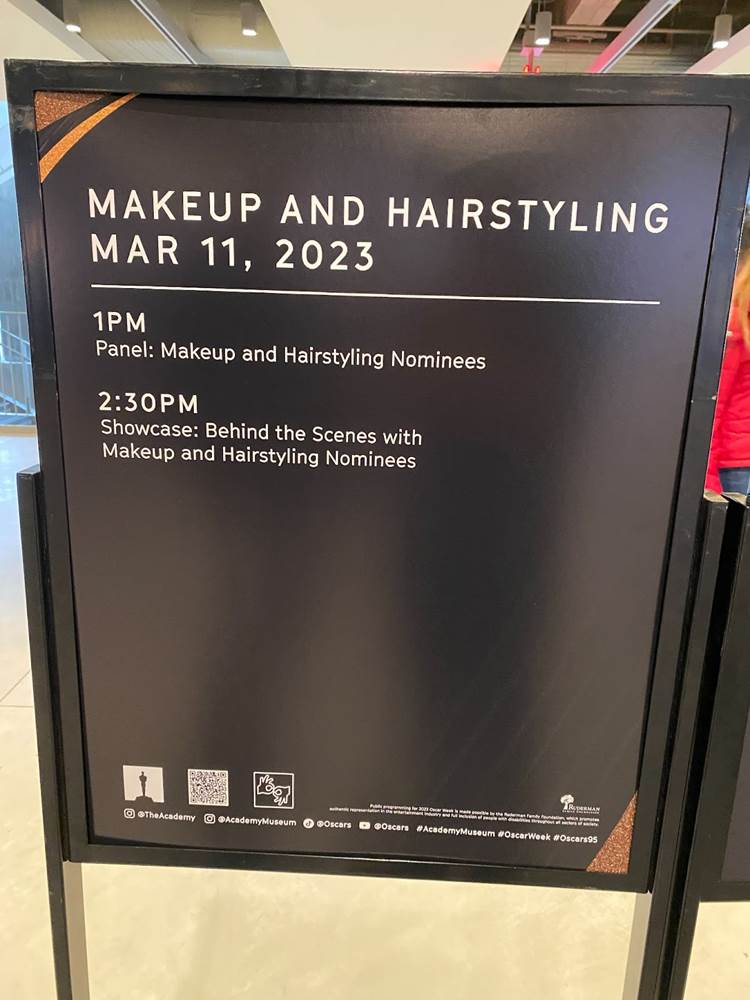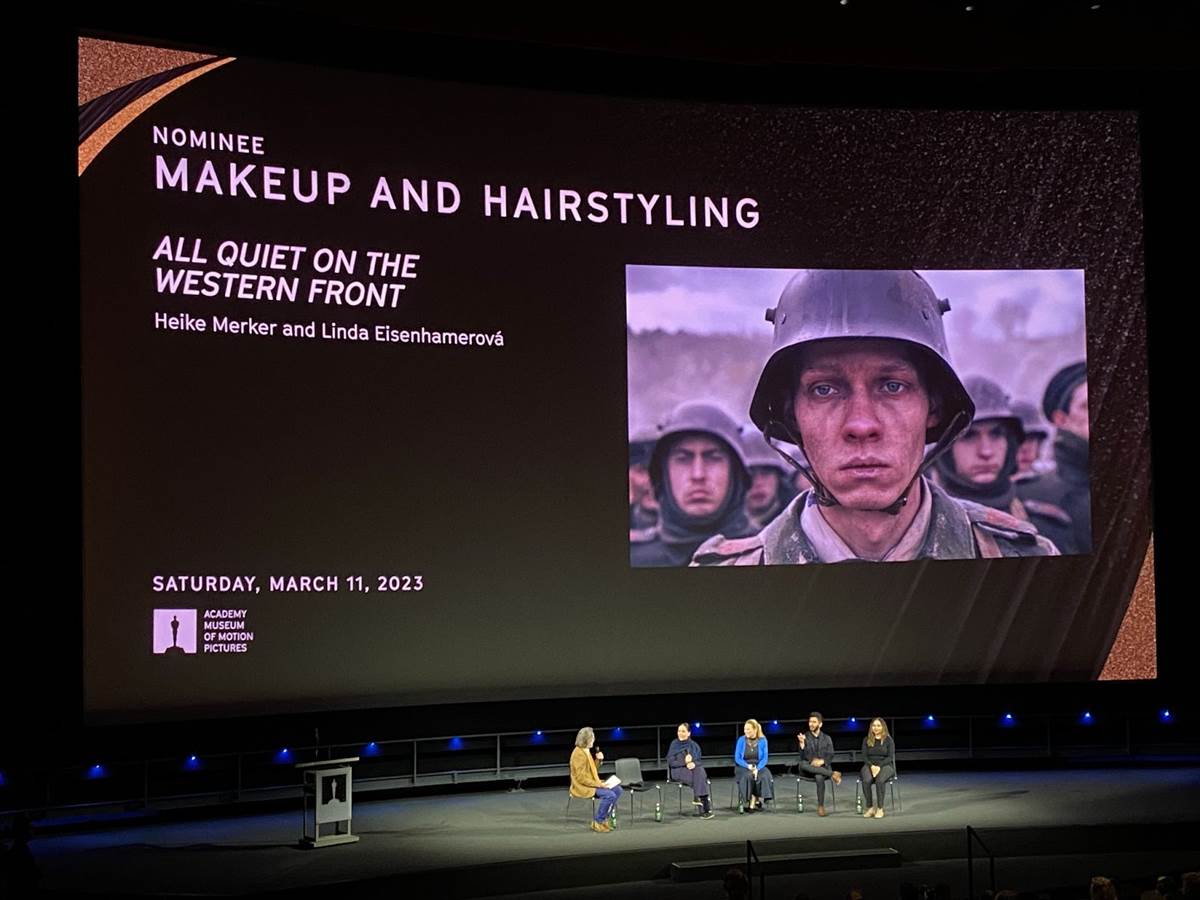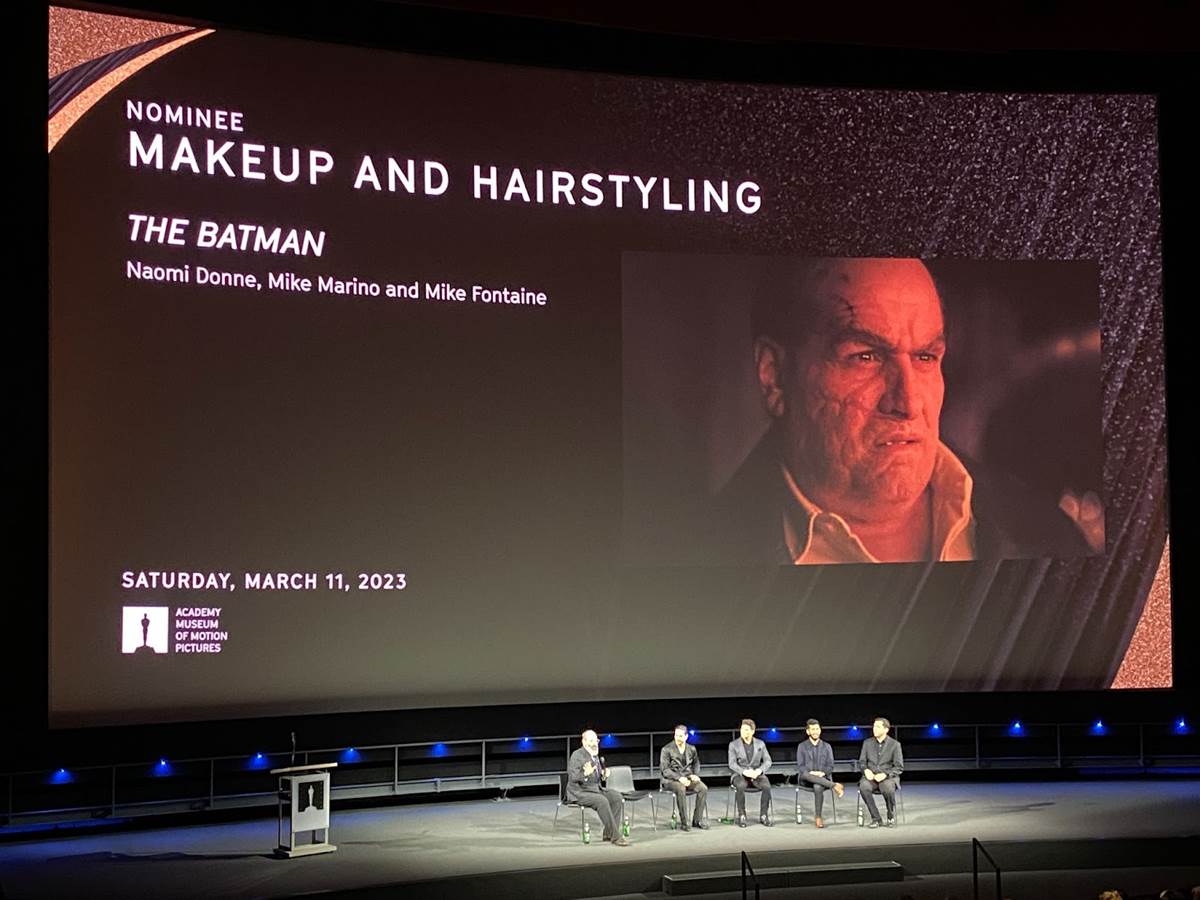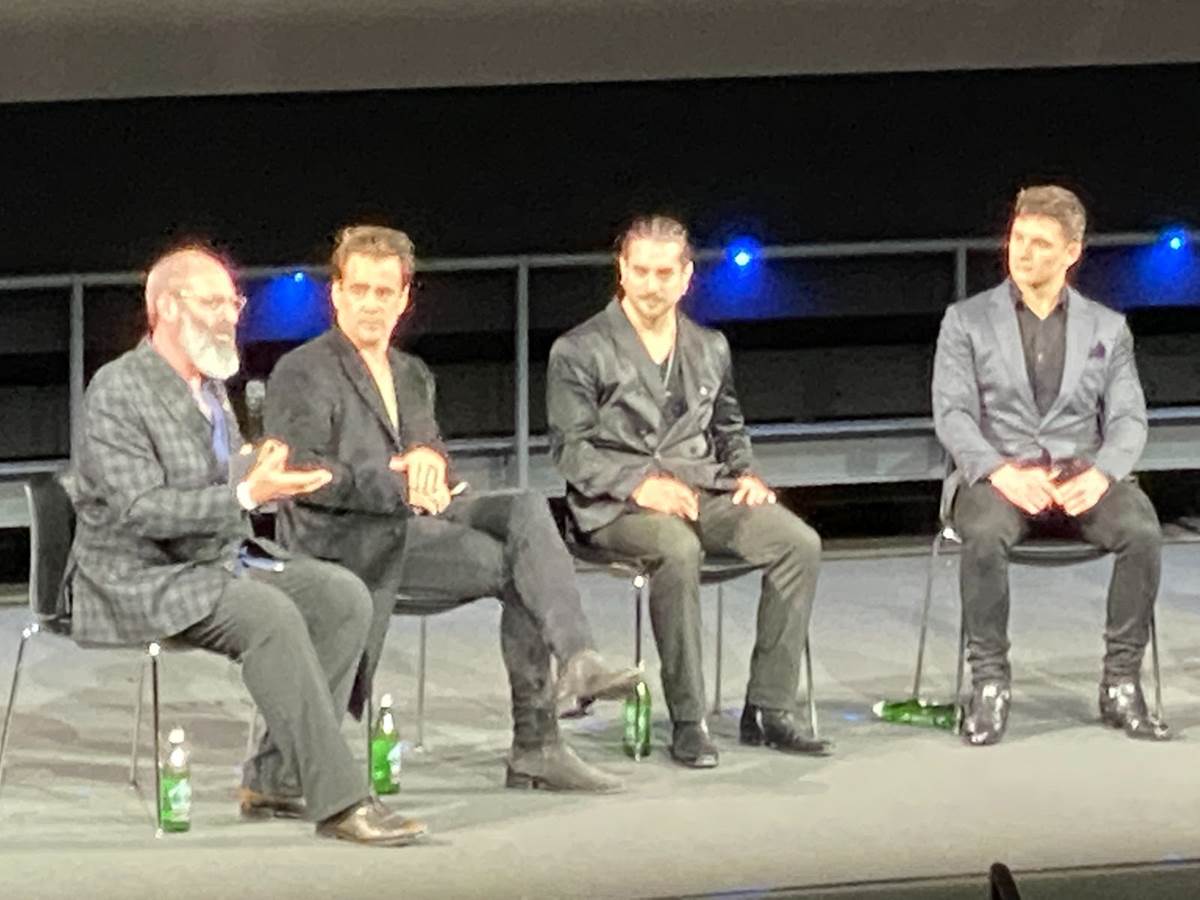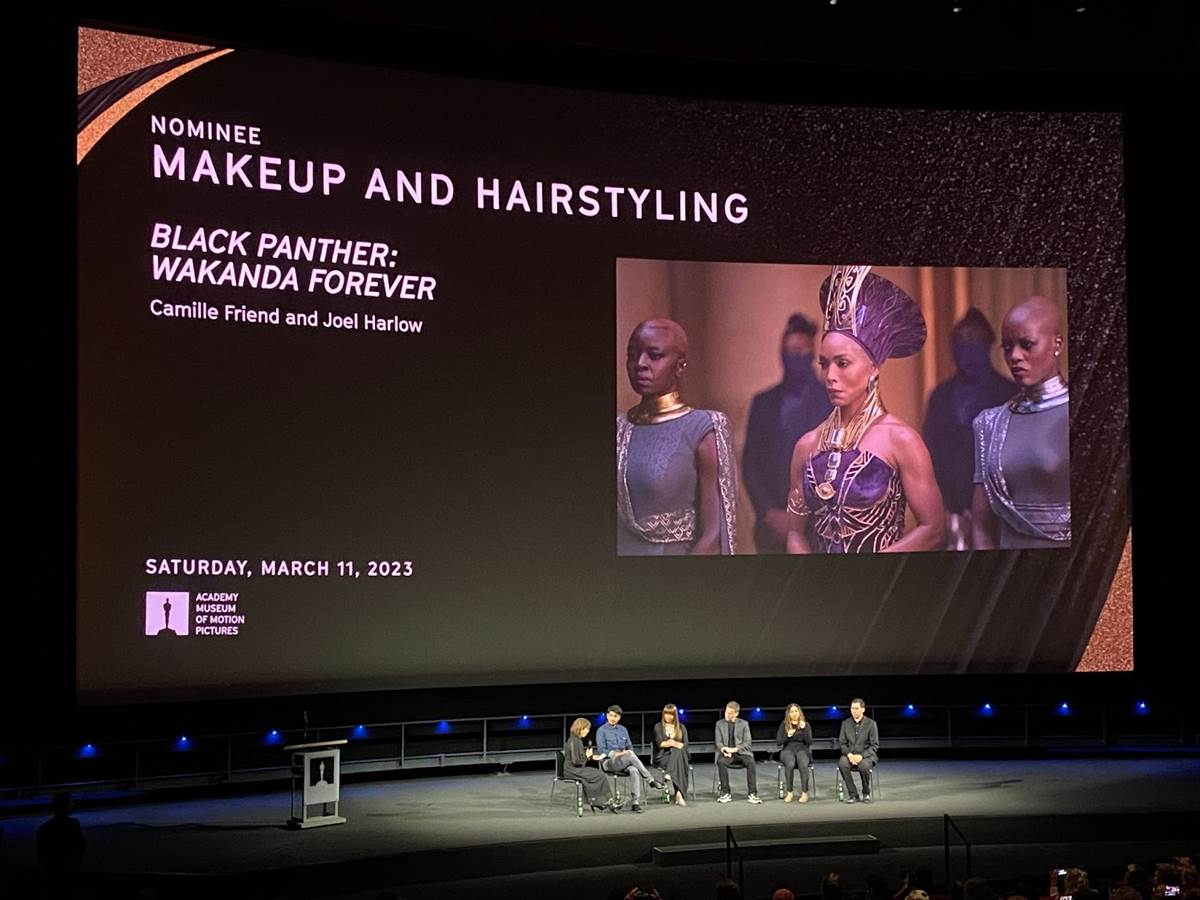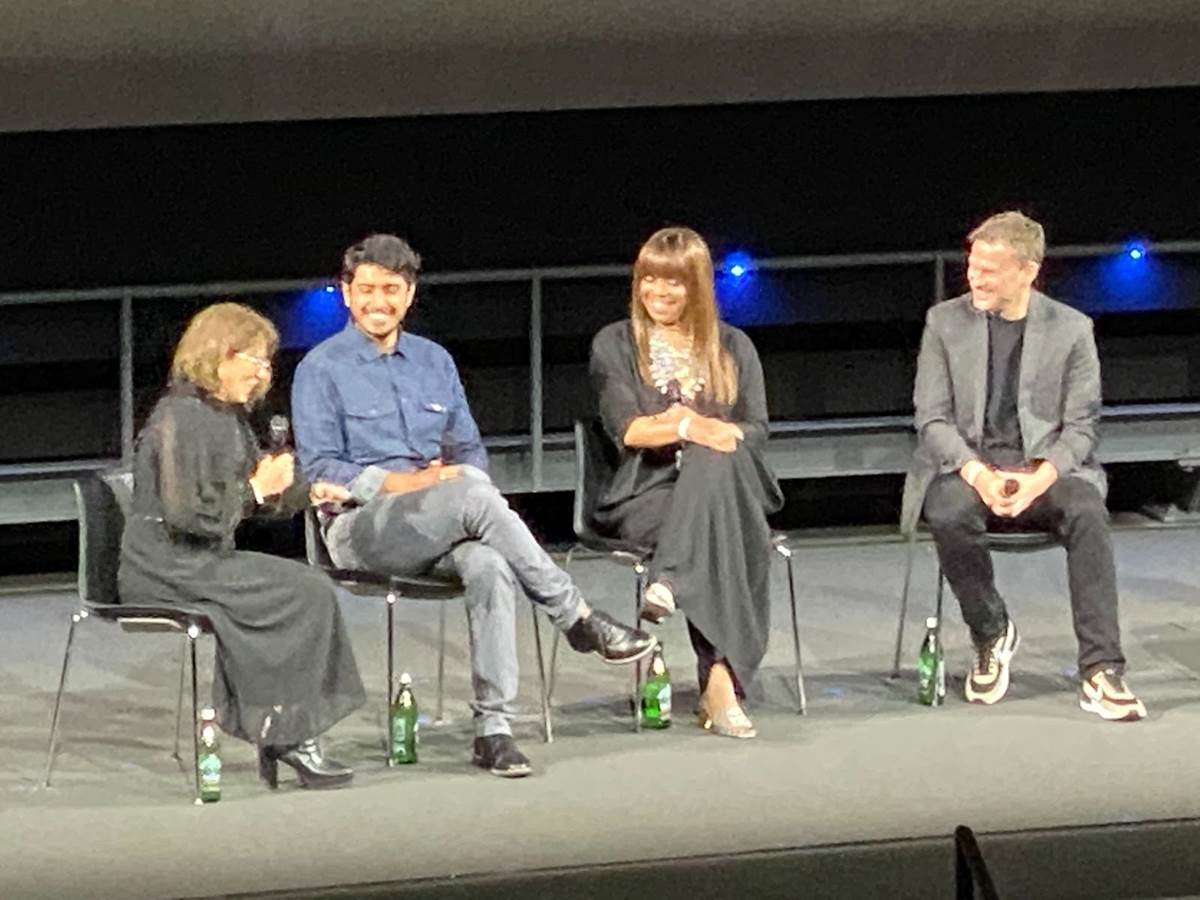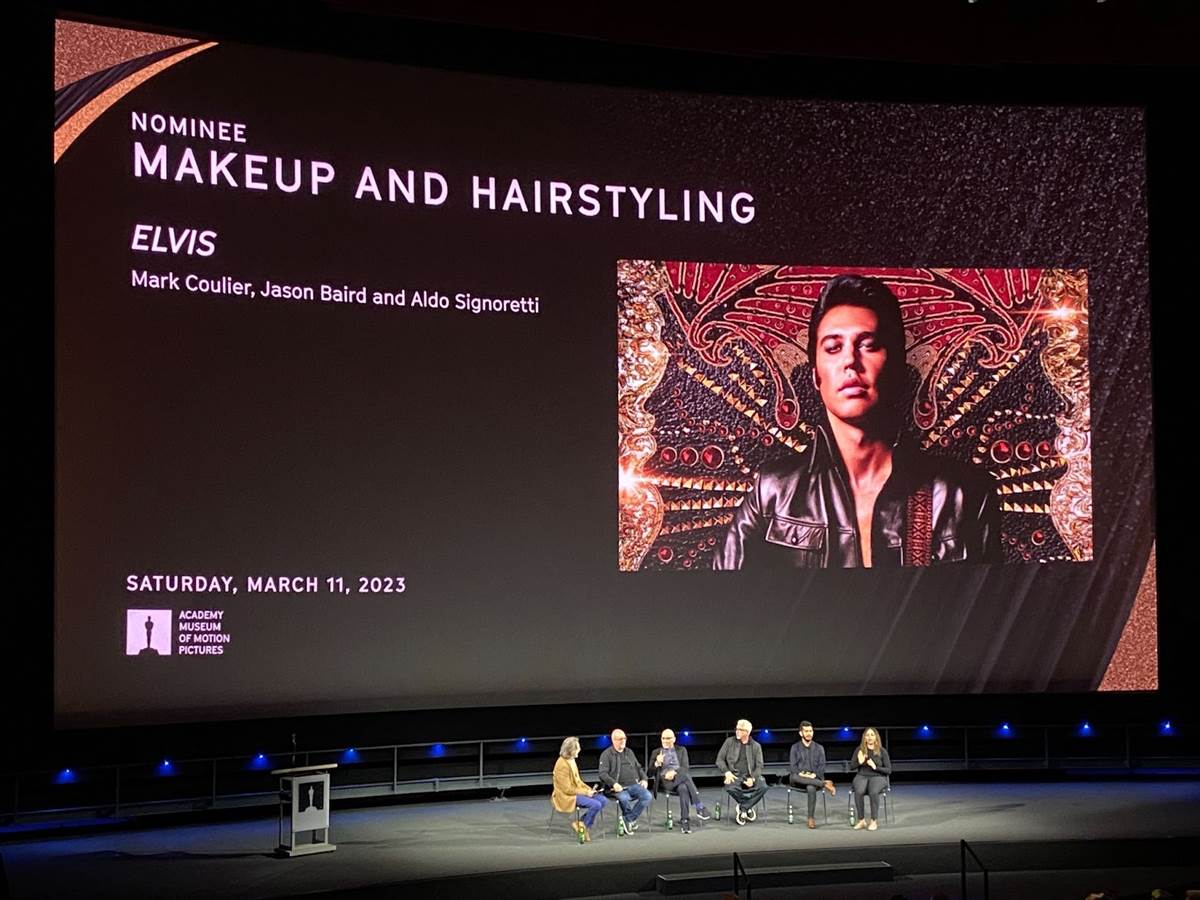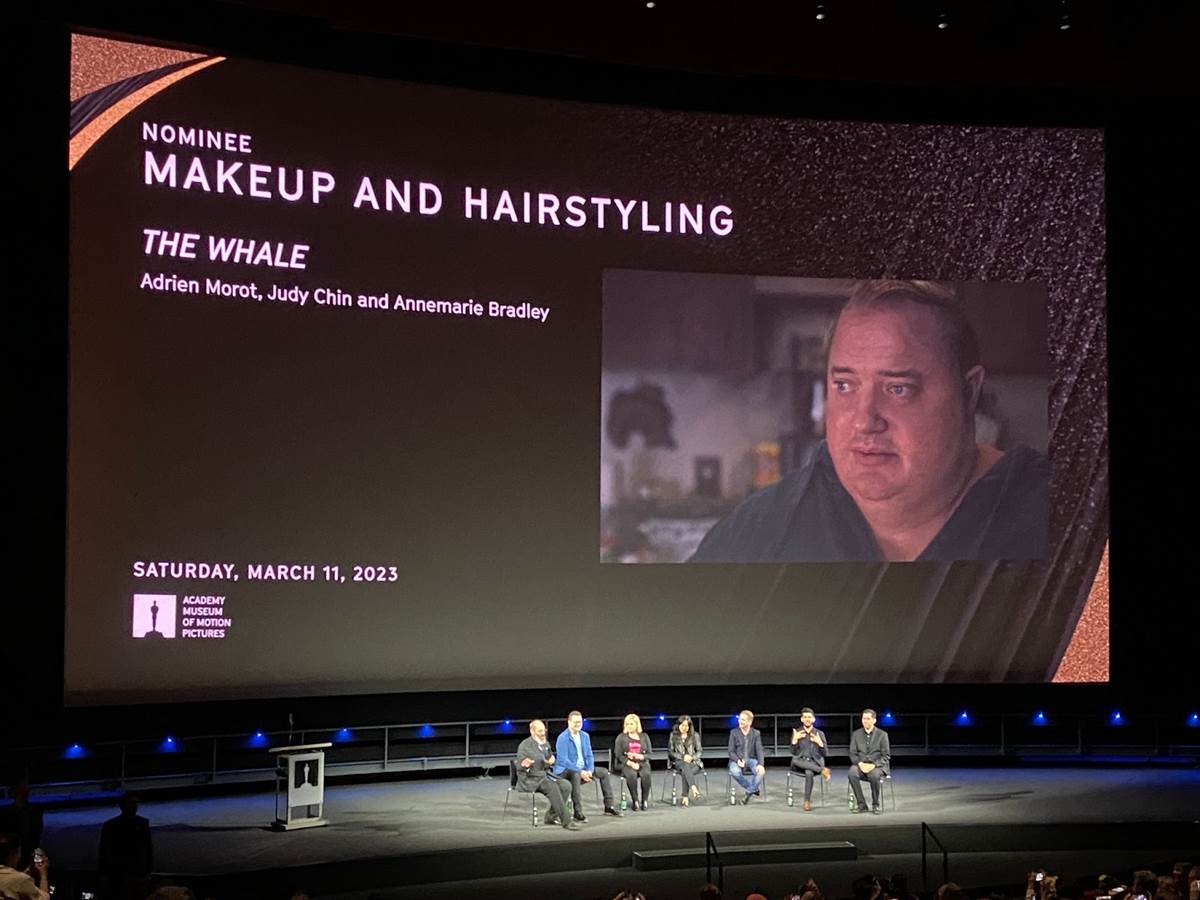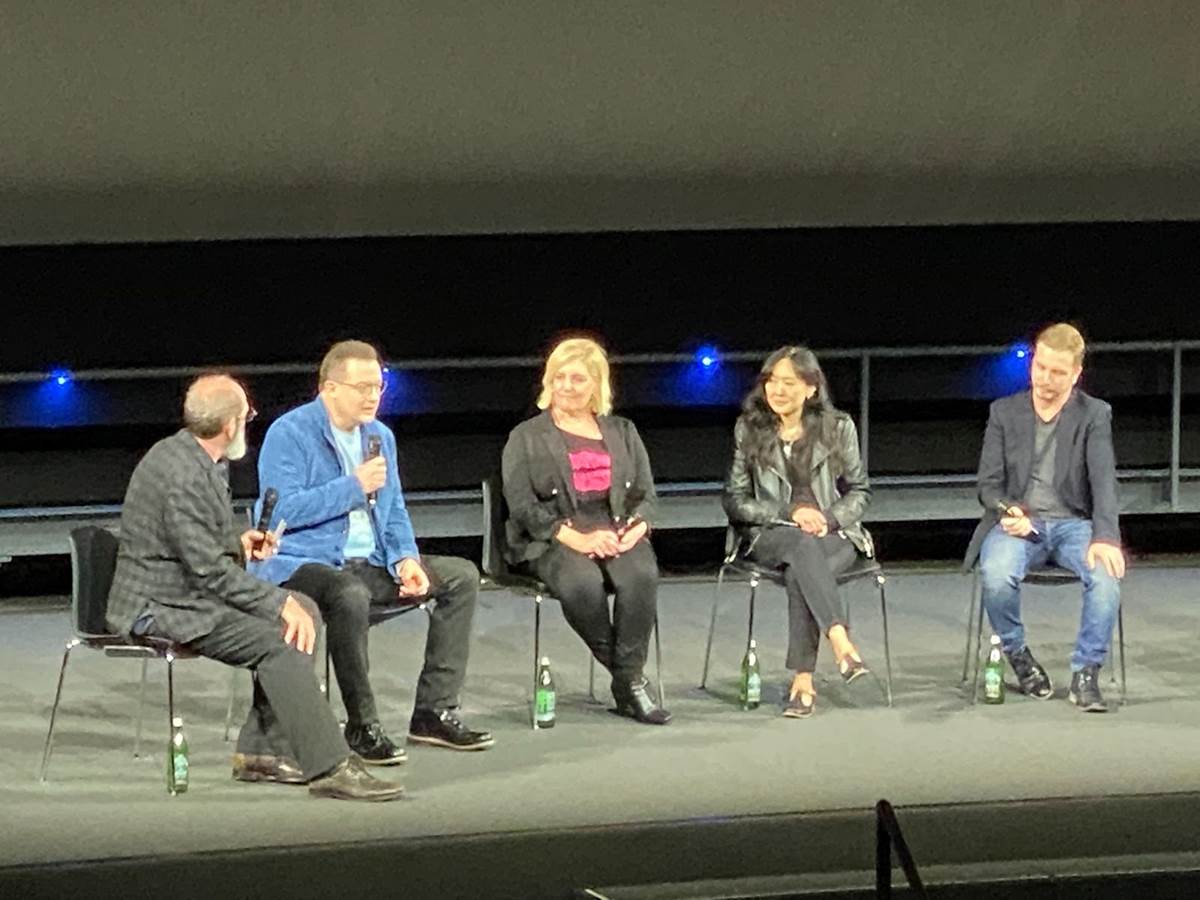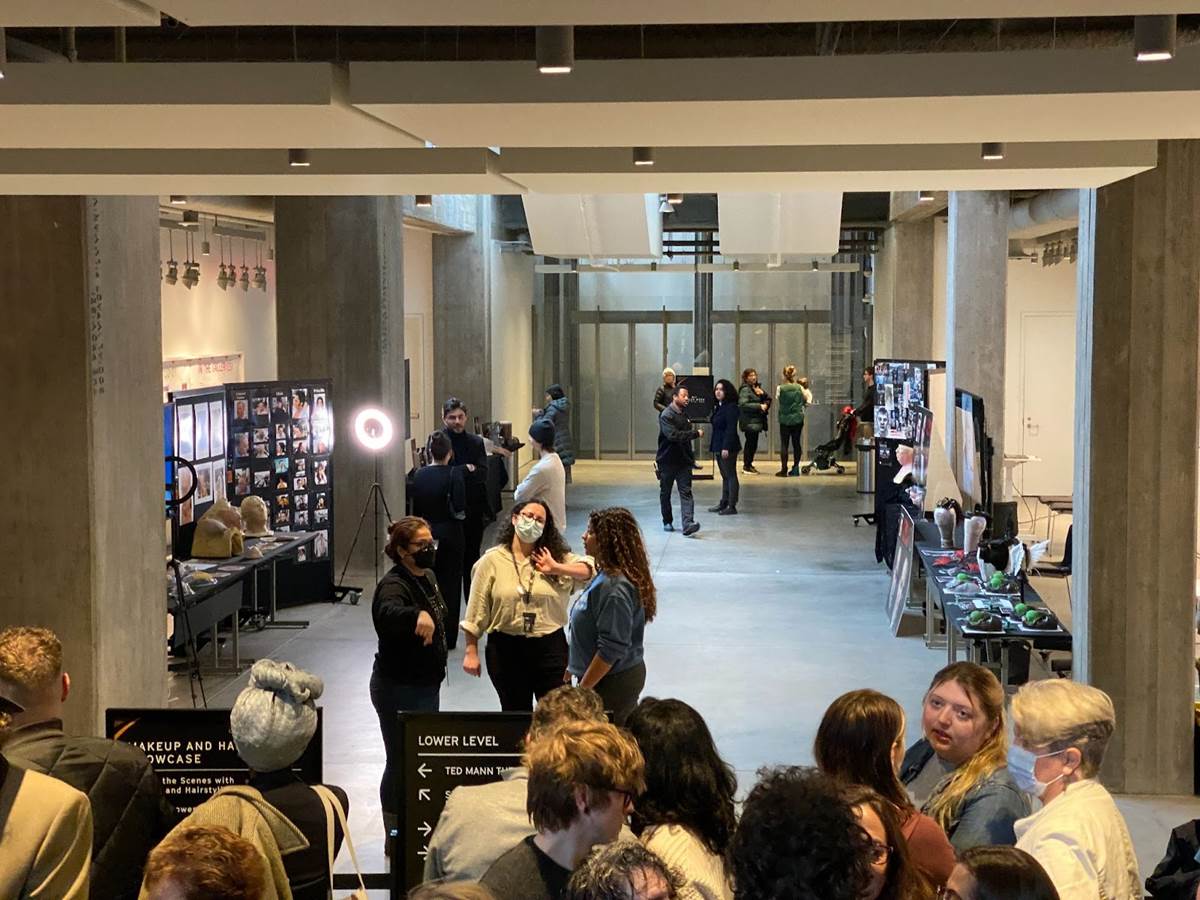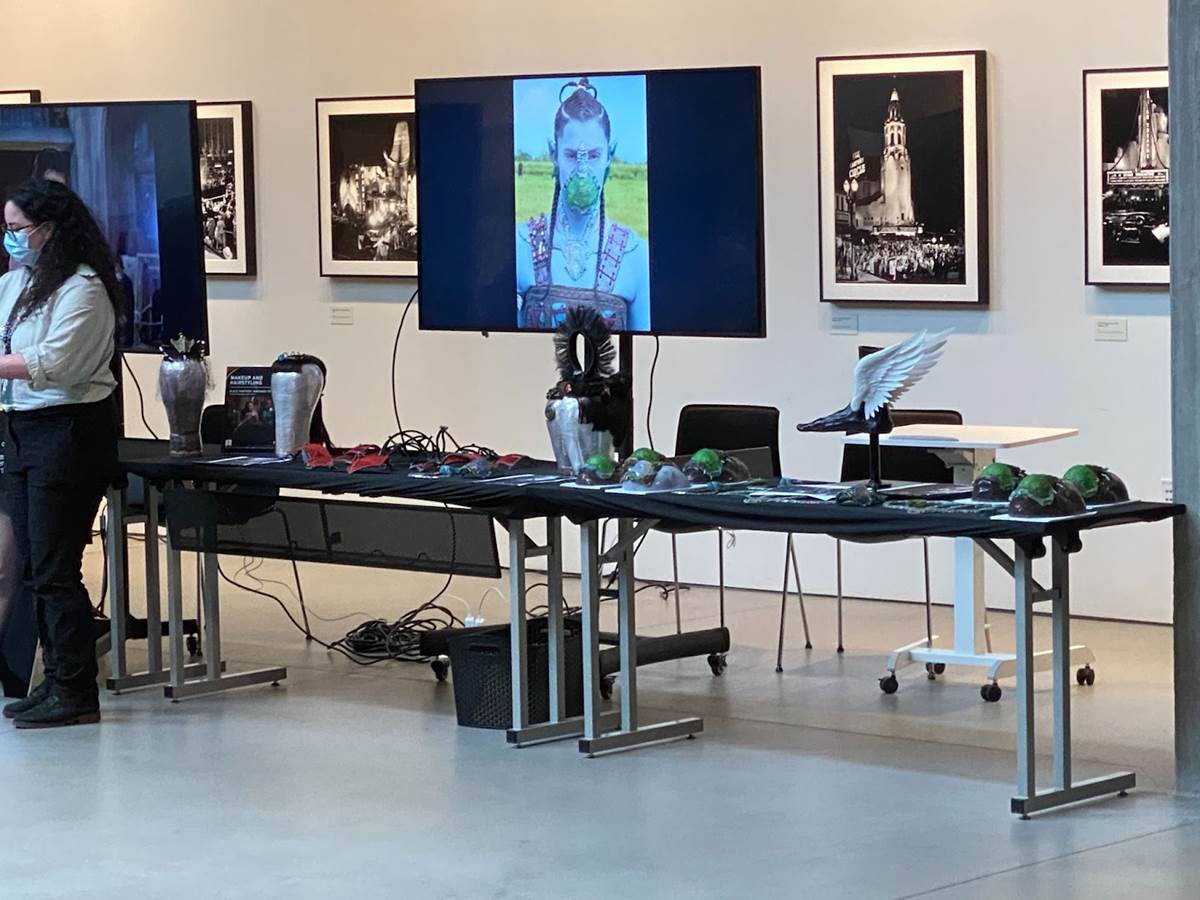Over the past couple days, Oscar Week programming continued at the Academy Museum of Motion Pictures in Los Angeles with panel discussions of the Best Live-Action Short and Best Makeup and Hairstyling categories.
On Friday afternoon, I attended the panel for Best Live-Action Short, for which the Disney-distributed and Alfonso Cuarón-produced Italian short film Le pupille was nominated.
The nominees participating in the Live-Action Shorts discussion were The Red Suitcase’s Cyrus Neshvad, Night Ride’s Eirik Tveiten and Gaute Lid Larssen, Le pupille’s Alice Rohrwacher and Alfonso Cuarón, Ivalu’s Anders Walter and Rebecca Pruzan, and An Irish Goodbye’s Tom Berkeley and Ross White. Moderator Peggy Rajski (Trevor) began the discussion by asking the filmmakers why film was the right medium to tell their stories.
The creators of An Irish Goodbye explained that they wanted to explore grief in a light way like laughing at a funeral, while the Ivalu filmmakers said their movie was based on a poetic graphic novel that takes place in Greenland, and that they wanted to start a conversation about the taboo subject of incest. The minds behind Le Pupille half-jokingly remarked that their goal was to answer the eternal question of how to split a cake, adding that their film is set in 1943 and is about power dynamics. Director Alice Rohrwacher said that producer Alfonso Cuarón had called her and asked if she wanted to make a movie about Christmas, also noting that the short-film format gave her the freedom to tell her story at any length she desired. “My involvement is that I wanted to taste her cake,” remarked Cuarón. The Night Ride creators said the lesson of their movie is, “If you want to go home, take a cab, not a streetcar” and talked about social responsibility (asking the question “Should we mind our own business or should we stand up for others?” and how their movie was partly inspired by the works of Buster Keaton– a slapstick style which could only be communicated visually.
Nashvad talked about how the idea for his story came from his mother telling him about women disappearing in Iran for making their opinions known or for not wearing their Hijabs correctly. “I have to do something about this,” he said, commenting that he wanted to tell a story about a woman exercising her free will. An Irish Goodbye is about burly working-class brothers, juxtaposing a brotherly relationship with duty of care. Berkeley and White said they were “incredibly lucky” with the casting of the movie, which they consider a character study between the two brothers, one of which is played by a “local legend” in Belfast named James Martin. The Ivalu filmmakers said they strived to find balance between the movie’s dark plot and the idea of bringing hope into the story, considering the source material had a darker ending. They also talked about working with real-life birds as a key element in their film, which represented a big part of Greenlandic mythology. Le pupille, on the other hand, was based on a letter, and the director decided to change the boys in the original story to girls, because “they have the power to split the cake.” she also said she strove to make the child actors feel comfortable and equal on set, not telling them which of them was intended to be the protagonist of the story. This film was cast via WhatsApp, made in a COVID bubble, and after the movie was completed all the young actors were invited to attend the Cannes Film Festival. Le pupille is part of a series of shorts that Cuarón spearheaded, exploring various end-of-year celebrations in different cultures.
Night Ride fosters a connection between two people who are overlooked outsiders, and the filmmakers insist that “in Norway, it is easy to steal trams, but they’re trying to stop that.” According to its director, The Red Suitcase creates tension through to the end via editing, but he did not want to make it an action movie– instead insisting on “a movie with action, but also with a slow pace.” To achieve this in post-production, he held test screenings for strangers, who he said were more likely to tell him the truth than people he knows. One of the final anecdotes we heard about Le pupille is that its director promised the children that they could eat the featured cake after production wrapped, but they also had to bring in other varieties of cake for vegans and those with food allergies. After the panel, I stuck around to watch all five Best Live-Action Short films and walked away thinking that Le pupille was the obvious standout.
Then this afternoon I returned to the Academy Museum for its final Oscar Week presentation– the one for the Best Makeup and Hairstyling category.
This panel featured creative talent from All Quiet On the Western Front, The Batman, Elvis, The Whale, and– most importantly for our purposes– Black Panther: Wakanda Forever.
Representing All Quiet On the Western Front were Heike Merker and Linda Eisenhamerová, who talked about how all the departments working on the film were literally “in the trenches” together, living through what the characters were going through for long days. They had two hours of prep work each morning, ten-hour shoots, plus cleanup and COVID protocols to deal with. “We just had to keep going,” said the makeup team. They commended the actors for allowing them to make them look dirty and gross, embracing their work even though they were shooting out of continuity– spending four to six weeks in the World War I trenches then moving on to the beginning of the film.
The makeup team for The Batman (Mike Marino and Mike Fontaine) surprised the audience by bringing out actor Colin Farrell, who portrayed Oz (AKA the Penguin) in the film. The movie was shot three years ago, and the team talked about how director Matt Reeves is a big fan of makeup and effects, before turning to Farrell’s participation: “He’s got a great face for makeup.” They also discussed how they are big comic-book fans, but The Batman is not in a comic-book style, so they couldn’t do the same style of makeup that Danny DeVito wore in Batman Returns. Instead they combined the character of Fredo from The Godfather (played by the late actor John Cazale) with the look of real-life penguins, bringing a birdlike element into Oz’s face and nose, creating a broad design for a realistic character.
“I’ve never felt such little ownership,” Farrell said about what he brought to the role of the Penguin as opposed to the makeup designers. He compared the character to a marionette puppet that he was operating– “I’m a glorified canvas.” He also remarked on the collaborative nature of the project, which combined dialect, wardrobe, and other aspects which all came together. “We’re doing it every day in New York now,” concluded Farrell, referencing The Penguin miniseries he’s filming for HBO Max.
Next it was time for the Black Panther: Wakanda Forever makeup and hair team, represented by Camille Friend and Joel Harlow, who brought out another special guest– Namor actor Tenoch Huerta. The team talked about their research on the different tribes of Wakanda, how they had contributed to the first Black Panther film, and how their biggest challenge in the sequel was creating the look of Talokan’s people. They took the civilization and put their own spin on it, crafting a Mayan / Latin culture in the Marvel Cinematic Universe. With Namor specifically, Huerta said the character needed to be alive, and that the hair, makeup, and costume makes him complete.
“It’s not a selfish job,” continued Huerta. “The team works together.” He explained how he made friends in the makeup trailer because they all had to spend so much time together each morning, and it was his first time on a big-budget movie. “This is like home,” he concluded. “It was a pleasure having him in the trailer,” said the makeup team, adding that there were moments during the shoot that brought them closer together. “When I touched his hair, I was like, ‘Yes!’” remarked Friend. “That’s how I felt when I touched his ears,” joked Harlow in response.
For Elvis, producer Patrick McCormick had called in a team to create the makeup effects for the Colonel Tom Parker character, but they ended up focusing on Austin Butler’s transformation into Elvis Presley. “Everyone knows what Elvis looks like,” said one member of the team, which was made up of Mark Coulier, Jason Baird, and Aldo Signoretti. Director Baz Lurhmann wanted Elvis to look more chiseled and mature than Butler, so in the film Austin is wearing a fake chin and prosthetics on his ears the entire time. They quoted Luhrmann as saying, “We’re making a monster movie, and our monster is beautiful.”
The final discussion of the day was for Darren Aronofky’s The Whale, for which nominees Adrien Morot, Judy Chin, and Annemarie Bradley took the stage, followed by actor Brendan Fraser himself, who stars as Charlie. They talked about the ambition to shoot a small movie in five weeks during the pandemic, and how Charlie was created from the outside in. “His body had to obey the laws of physics and gravity,” said Fraser. “It gave me a strong sense of ownership, in being able to speak the voice of those who don’t often have a voice. In the film he wore heavy, full-body, head-to-toe prosthetic makeup, and the team wanted to ensure that the audience would believe that Charlie’s skin was real. They kept the other characters’ makeup quite bare so that Charlie would be believable in comparison. “She Frankensteined me, and I liked it,” joked Fraser, whose hair was removed so the hairstylists could add wig pieces. Aronofsky was quoted as insisting that “at no point can you interfere with Brendan’s main tool, which is his ability to act with his face.”
The movie was mostly shot all in one location, so the makeup could not be a distraction. “A minute into the movie he becomes Charlie, and you don’t think of the makeup after that.” The makeup process for The Whale started around 4:30 each morning, when Fraser and the team would watch YouTube clips together while his prosthetics were being applied. The makeup itself had to match the tone of his face, even when Charlie’s face turned red as he got angry or as his health declines through the film. His fat suit required a lot of maintenance and consisted of several layers, one of which was a cooling suit that connected to pipes through a trapdoor in the couch on set. “Darren likes to shoot long takes,” said Fraser, who then put to rest some internet rumors. “This is not a digital creation.”
After the presentation, the Academy Museum had a behind-the-scenes showcase with booths from all of the makeup and hairstyle nominees present for the event, but it was incredibly difficult to get inside, considering it was chaotically organized and there were 900 people in attendance trying to squeeze into a space that could hold less than 100 of them. Still, I managed to snap a photo of the Black Panther: Wakanda Forever booth from behind the ropes.
The 95th annual Academy Awards will air at 5:00 PM Pacific Time tomorrow evening, Sunday March 12th, on ABC.

